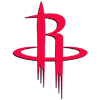College football spring practices are firing up, which means RotoWire will preview key job position battles at schools across the country. This article will feature the top job battle at each school and will provide a projected outlook for the group for the 2019 campaign.
Central Florida
Position of Interest: Tight End
The biggest question for the Golden Knights coming into the offseason was how they were going to deal with the loss of McKenzie Milton at quarterback after his horrendous knee injury, but head coach Josh Heupel was able to work the free agent market and bring in Notre Dame transfer Brandon Wimbush. With the team's top two running backs and four wide receivers all returning, that makes Michael Colubiale's departure the most glaring.
In general, Heupel used his tight ends less than his predecessor, Scott Frost, as the position group dropped from 55 catches for 858 yards and five touchdowns in 2017 to 23 catches for 291 yards and four touchdowns in 2018. Almost all of that was Colubiale, who had 21 catches for 278 yards and three touchdowns by himself.
That leaves Jake Hescock, a Wisconsin transfer, as the only returning tight end with pass-catching experience, although he played more of a blocking role last year with 13 games played but only two catches. Another option to see increased production would be Chris DeLoach, who did not play last year after grabbing 11 catches for 116 yards and two scores in 2017 at the
College football spring practices are firing up, which means RotoWire will preview key job position battles at schools across the country. This article will feature the top job battle at each school and will provide a projected outlook for the group for the 2019 campaign.
Central Florida
Position of Interest: Tight End
The biggest question for the Golden Knights coming into the offseason was how they were going to deal with the loss of McKenzie Milton at quarterback after his horrendous knee injury, but head coach Josh Heupel was able to work the free agent market and bring in Notre Dame transfer Brandon Wimbush. With the team's top two running backs and four wide receivers all returning, that makes Michael Colubiale's departure the most glaring.
In general, Heupel used his tight ends less than his predecessor, Scott Frost, as the position group dropped from 55 catches for 858 yards and five touchdowns in 2017 to 23 catches for 291 yards and four touchdowns in 2018. Almost all of that was Colubiale, who had 21 catches for 278 yards and three touchdowns by himself.
That leaves Jake Hescock, a Wisconsin transfer, as the only returning tight end with pass-catching experience, although he played more of a blocking role last year with 13 games played but only two catches. Another option to see increased production would be Chris DeLoach, who did not play last year after grabbing 11 catches for 116 yards and two scores in 2017 at the JUCO level.
Two other possibilities that I feel need to at least be mentioned would be Colubiale's brother Jason Colubiale, who is listed as a wide receiver on the roster despite wearing #45. The other would be Heupel steering farther into the spread offense and replacing Michael Colubiale with one of their numerous skilled wide receivers rather than a tight end.
Cincinnati
Position of Interest: Primary Wide Receiver
The Bearcats found their quarterback of the future last year with the emergence of true freshman Desmond Ridder, who was able to manage the team's run-first approach wonderfully with a 62.4 completion percentage for 2,445 yards and 20 touchdowns against only five picks. But every pass that Ridder throws needs to be to somebody, and he's lost his favorite target with the graduation of Kahlil Lewis.
No other wide receiver for Cincinnati last year caught more than 30 passes, though tight end Josh Deguara did help out over the center of the field with 38 catches. Lewis was also the only player with more than 500 receiving yards and was a red-zone favorite with nine touchdowns.
That's not to say that Cincinnati doesn't have the talent to replace Lewis. Reshad Medaris demonstrated some big play ability last year with 18.15 yards per catch on 26 grabs, and Jayshon Jackson showed some promise as a true freshman with 23 catches for 278 yards and two touchdowns. Ridder should also have some more comfort spreading the ball around with a year under his belt, so he might be less reliant on one specific receiver like he was in 2018.
East Carolina
Position of Interest: Running back
Although East Carolina losses one of the top players in the conference in Trevon Brown at wide receiver, the lack of a distinguished running back is a serious question mark for new head coach Mike Houston.
Houston really pounded the run during his tenure with James Madison, averaging 183.3 rushing yards per game in 2018 compared to only 223.6 passing yards. East Carolina, for its part, only averaged 135.3 rushing yards per game last year, which was 102nd in the country. Although quarterback Holton Ahlers showed mobility last year and lead the team in rushing, Anthony Scott is gone and no other running backs last year averaged more than 23 yards per game. And with no ball carriers in the 2019 recruiting class, Houston won't have much of a choice when it comes to what he's working with.
The returning rushers are Hussein Howe and Darius Pinnix, who averaged 19.67 and 22.2 yards per game each, respectively. They're each likely to see more carries with Scott gone, but those lackluster numbers in the chances they did receive certainly leave something to be desired.
Another name to watch is Trace Christian, who didn't see much action last year as a freshman but was second on the team with 4.26 yards per carry, behind only Ahlers. He had a breakout game against UConn with 13 carries for 102 yards and a score late in the season, but then couldn't translate carries over the rest of the year to much success. He could be a guy who benefits from the regime change and works the opportunity into more touches.
Houston
Position of Interest: Tight End/Wide Receiver
Similar to Cincinnati, other teams are likely looking at Houston and dreading how much talent they're returning on a team that was threatening for the conference championship before D'Eriq King went out with a knee injury in the middle of November. He should be back and ready for an explosive senior season, along with his backfield partner Patrick Carr and a handful of dangerous receivers.
The only player of note the Cougars lost is Romello Brooker, the tight end who was fourth on the team with 33 catches for 409 yards and third with seven touchdowns. Whether or not Houston even tries to replace Brooker's production with another tight end is a whole different question, as the returning skill group only has two career catches, recorded by Parker Eichenberger for a grand total of four yards in 2018, although both went for touchdowns.
If the Cougars do try and replace Brooker's production with another tight end, Eichenberger is the favorite. Although, the more likely scenario would be to turn to somebody in their dynamic receiving corps. Jeremy Singleton (19 catches, 285 yards, two touchdowns in 2018) could be the guy to make a step forward with Marquez Stevenson, Keith Corbin and Courtney Lark blocking him at the three primary wide receiver spots.
Memphis
Position of Interest: Running Back depth
Memphis has one of the biggest challenges of any team in the country this year to replace the production they lost at running back. While almost everybody is aware in what they lost in Darrell Henderson—1909 yards rushing, 295 yards receiving, 25 total touchdowns—they'll need to replace Tony Pollard, too. Pollard took 78 carries for 552 yards and six touchdowns, while also finishing second on the team with 458 receiving yards on 39 catches with three touchdowns.
Pollard and Henderson were two of the three juniors who held up the running back rotation for the Tigers in 2018, leaving Patrick Taylor Jr. as the only one who didn't go pro early. He should have little competition for the starting role, but the battle will be for who is behind him. Each of the last two years, head coach Mike Norvell has had two running backs gain at least 130 carries, but nobody returning outside of Taylor had more than 14 carries in 2018.
Timothy Taylor is one guy who provides the Tigers with the versatility they like in the backfield. He played running back, wide receiver and kick returner in high school, which makes him the safest bet to replace Pollard both in the backfield and on kick returns.
The other guy to keep an eye on would be Kenny Gainwell, who showed some big play ability last year with four carries for 91 yards before being shut down to preserve a redshirt. He also shadowed Pollard in practice, so he might have the most knowledge when it comes to that role Pollard played last year.
Navy
Position of Interest: Quarterback
The word "quarterback" is really just a formality for the Navy offense, signifying who takes the snap from under center and makes the reads for the options. Very rarely is one of those options a forward pass.
The Midshipmen had three players who primarily ran the offense last year between Garret Lewis, Zach Abey and Malcolm Perry. Perry is the only one returning, and although he was the best of the three at running the ball and got the most carries, his passing accuracy was the lowest. It's not uncommon for Navy to switch who is under center based on the situation, and whether or not they stick with Perry when they need chunk plays through the air will be at the center of conversation in camp.
Only one other player for Navy had a career pass attempt, wide receiver OJ Davis, so the job is Perry's to lose going into his senior season. But even with the low expectations the service academy has for their passing game, his 36.0 completion percentage from last year needs to take a step up, or else it wouldn't be surprising to see the coaching staff look at other options late in games.
SMU
Position of Interest: Running back
SMU's offense didn't demonstrate the efficiency moving the ball like you would expect from the Air Raid offense, ranking 94th in the country in yards per games at 363.1. A large portion of that came down to poor quarterback play, which should be fixed with Texas transfer Shane Buechele now at the helm. With that problem nailed down, the attention turns to running back.
Although senior Braeden West led the backfield for most of the season with 138 carries for 589 yards, a replacement for him started to emerge over the final weeks in the form of Ke'mon Freeman. He arguably was the team's top choice over the last four games, averaging 15.0 carries and 72.8 yards per game while scoring six total touchdowns. But he needs to improve in the passing game if he wants to really secure his name on the top of the depth chart.
Xavier Jones started ahead of Freeman on last year's depth chart early in the season, in large part due to his better understanding of the aerial attack. If that hasn't changed, it will throw a wrench in spring camp as the offense starts to take form in the new season. If Freeman can better grasp the passing game, or if Jones can improve his running, one of them could establish himself as the sole starter. If not, we could be looking at a true rotation for the second year in a row.
South Florida
Position of Interest: Running Back
Unlike most of the other teams in the conference, South Florida's most intriguing camp battle doesn't come as a replacement for a graduated player but instead was created when a guy decided to come back.
Jordan Cronkrite started last year as the team's top running back, and the choice looked justified when he surpassed 100 yards in five of his first six games, including a Week 5 trip to UMass when he rushed for 302 yards and three touchdowns on 23 carries. But after those first six games, Cronkrite started to slow down and only averaged 3.5 yards per carry over the second half of the year.
Coincidentally, as Cronkrite slowed down, freshman Johnny Ford found his stride. Over the last seven games, Ford took over as the team's top choice and averaged 85.0 yards per game with six total touchdowns. That gave each of them half a season of good production to hang their hat on, giving each a legitimate claim to be the team's starter in 2019.
The other serious question to consider will be whether or not Ford has the size to hold up under the stress of a full season. He doesn't have the stature of a prototypical running back, standing at only 5-foot-5 and 168 pounds, compared to Cronkrite's more typical 5-foot-11, 207 pounds. That makes the situation ripe for a rotation with Ford as the speedster and Cronkrite as the bruiser, but each has the potential to step up and claim the role outright with good spring and fall camps.
Temple
Position of Interest: Running Back
No team in the American seems to be as unprepared to replace a graduated starter as the Owls. Ryquell Armstead was 16th in the country last year with 1,098 rushing yards while adding on 13 touchdowns on 210 carries, but he's moved on to the NFL. Along with Rob Ritrovato (270 yards and four scores on 69 carries), Temple has to replace both of their starting backs.
They got a taste of what that rushing game is going to look like in the Independence Bowl last year when Armstead was out with an ankle injury, but the result wasn't inspiring. Junior Jager Gardner got start, but he only managed 34 yards on seven carries. Despite that performance, he still enters spring camp as the top choice.
Behind him are several choices who could push for carries. Sophomore Jeremy Jennings missed eight games last year with an undisclosed injury, but he got six carries in that Independence Bowl after taking four carries for 60 yards in the regular season finale against UConn. Tyliek Raynor could emerge from camp with the potential for duty too after limited action last year.
Regardless of who comes out of camp the favorite, they'll be relied on to help pace the offense. The Owls play one of the most run-heavy offenses in the conference, and while quarterback Anthony Russo was able to manage games last year, his play never suggested the team would be comfortable getting away from the run game. That means the starter, whoever it is, should have some value simply in the form of volume.
Tulane
Position of Interest: Wide Receiver
The passing game for the Green Wave never really clicked as efficiently as it should have last year, due in large part to inconsistent quarterback play from Justin McMillan and Jonathan Banks. Despite that, both Darnell Mooney and Terren Encalade ended the year with more than 40 catches for 700 yards.
Only one of that duo is left after Encalade's graduation, and when combined with departures from other players, Tulane is left with Mooney as the only in-house receiver returning with more than eight catches last year. That leaves a giant vacuum for players to line up on the opposite side of Mooney.
The clear favorite is Jalen McCleskey, who joins Tulane as a graduate transfer from Oklahoma State. He left the Cowboys after playing in four games in 2018 and not liking his involvement in the offense, but has showed upside in the past. He peaked in 2016 with 73 catches for 812 yards and seven touchdowns, and a quick grasp of the offense could have him rivaling Mooney as McMillan's favorite target.
But last year was a case study of why two good wide receivers aren't always enough to breakdown defenses, and younger players will need to step up with Mooney and McCleskey drawing attention. Jaetavian Toles played that role last year with seven catches for 74 yards and a touchdown, but Jacob Robertson could be a guy who displaces him.
Tulsa
Position of Interest: Quarterback
Tulsa doesn't exactly meet the key criteria of a marquee quarterback battle since both contributors from last year are returning, but neither impressed in their action so it remains a wide-open battle.
Luke Skipper broke fall camp as the starter in his redshirt sophomore season, but injured his back after Week 4 and was shut down for the year. In those four games, he completed 58.6 percent of his passes but only averaged 179.0 yards per game. He also showed major security issues, throwing six interceptions and losing four fumbles. No matter how good you are, 10 turnovers in four games is simply way too many.
For his part, Boomer was a step down in passing, but was much smarter with the ball. He only completed 51 percent of his passes for 172.3 yards per game, but he committed two less total turnovers (four interceptions, four fumbles) despite playing in four more games. He also got stronger as the year went on, completing 65.3 percent of his passes for 191.3 yards per game over the last four weeks.
That strong finish is what seemingly has given Boomer the leg-up going into spring camp. In an offense that's going to ride running backs Shamari Brooks and Corey Taylor as much as they can, Tulsa needs a quarterback who avoids mistakes and doesn't turn the ball over rather than a game-changer, and Boomer seems to fit that criteria more than Skipper.
UConn
Position of Interest: Quarterback
Alas, we get to the one true quarterback competition in the conference, even if it comes from what amounts to a glorified high school team. The Huskies were hard to watch last year, but quarterback David Pindell wasn't at fault. His running ability was a large reason UConn actually ranked seventh in the conference in yards per rush at 4.79, even if his passing numbers weren't always great.
With Pindell gone, UConn brings back two quarterbacks who attempted passes last year, Marvin Washington and Steven Krajewski. Washington played more last year, attempting 24 passes in three games against Krajewski's three attempts in one game, but neither got a large enough sample size to really pull away from the other. It can't be ignored that head coach Randy Edsall went to Washington first after Pindell, but either could gain the role with good camps.
The main upside that Washington offers that Krajewski doesn't is mobility, which should play a factor after how much the team relied on Pindell's legs last year. Washington showed some security issues last year with three interceptions, however, and a team that already struggles as much as the Huskies can't give away possessions. That might leave the door open for Krajewski to earn the job.









































